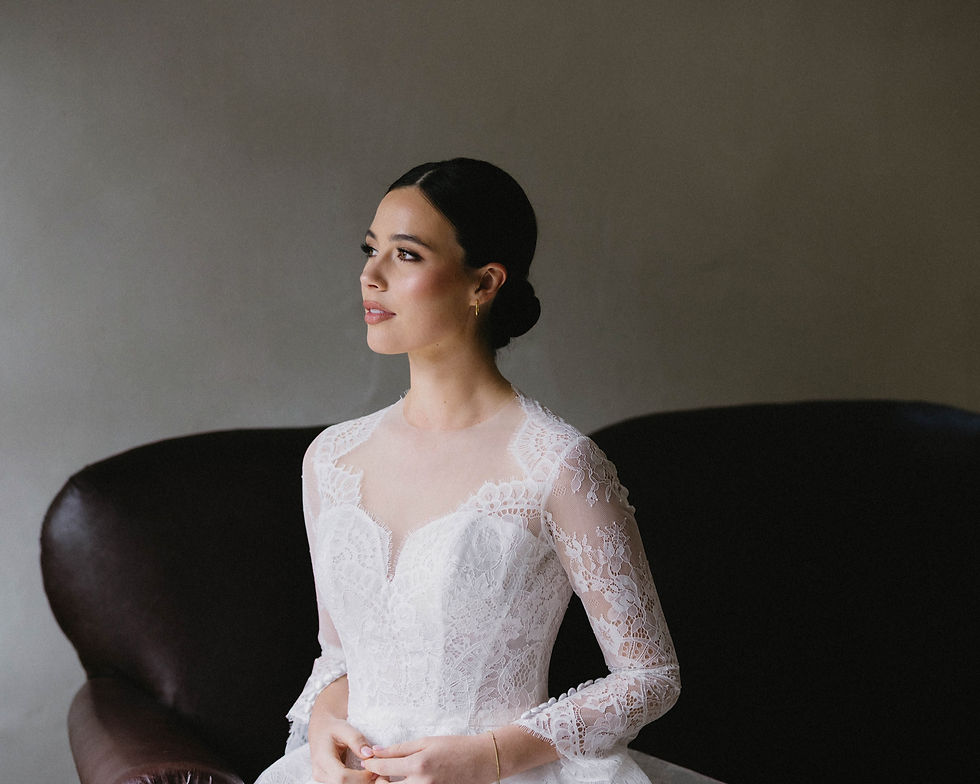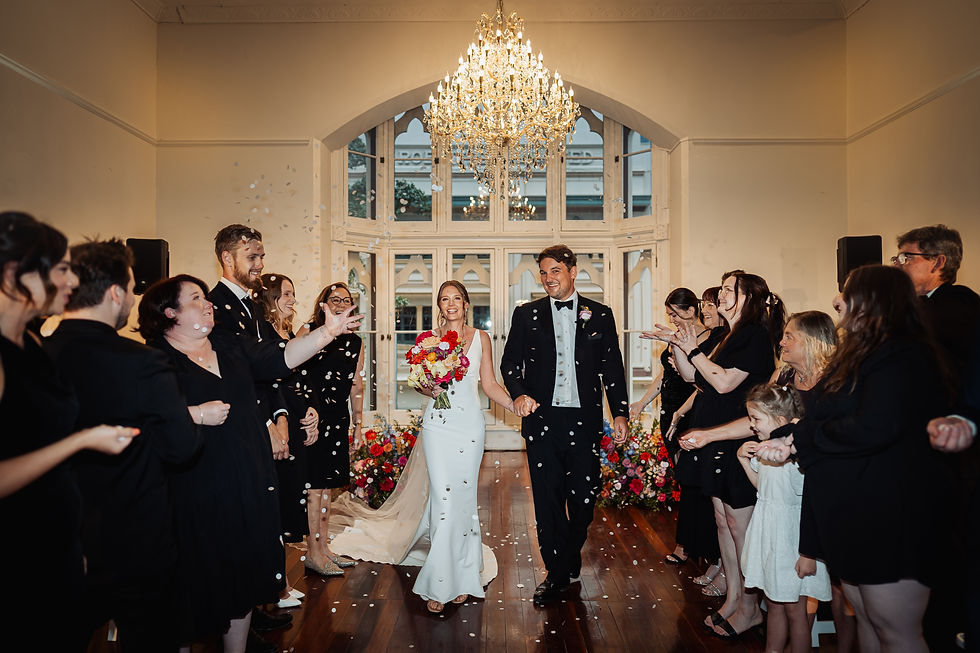Everything The Newbie Makeup Artist Needs To Know!
- Kitzie Nuñeza
- May 19, 2022
- 6 min read
If you're one of the countless newbie makeup artists out there, you've come to the right place! Makeup is a skill; a talent. It takes practice, practice, and more practice to perfect your skills. However, in the midst of all this practicing, you will hit obstacles that stand in your way. Continue ahead as you learn different makeup tips that will be useful in your journey to being the best makeup artist you can be.

Eyes
Your eyes are the focal point of your face and will be what people notice most about you. To make them look their best, you should start with an eye primer. Eye primer is a product that helps to hold eye makeup in place all day long without creasing or smudging.
Next, if you’re looking to enhance the color of your eyeshadow, use a darker shade as an eyeliner on the upper lid and a blending shade under the lower lash line (towards the tear duct). You can also apply it to both lids at once for a more natural look by blending them together before applying mascara, but remember that this technique doesn’t work well for everyone!
Mascara is used after applying your eyeshadow so that it darkens and lengthens lashes. To avoid clumping up lashes with multiple coats of mascara (which can cause irritation), wait until each coat dries before applying another one until desired thickness is achieved.
If you have sensitive skin around your eye area, try using an eye cream instead of a regular moisturizer because it won't irritate sensitive skin as some products do.
Face
Foundation is the base for your makeup. Make sure to choose a color that is close to your skin tone, but not exact. You want to look like you have beautiful, porcelain skin and not a mask! Concealers can be used to cover up blemishes or dark circles under the eyes. When choosing a concealer, make sure it's also lightweight so it doesn't look heavy under makeup. Powder sets the foundation and keeps it looking matte throughout the day without being too heavy on top of everything else we're going to apply!
Blush gives cheeks life with color while still keeping them natural-looking; bronzer adds definition by creating shadows where light would normally hit; highlighter creates dimension in certain areas (such as around the center of one’s nose) making them appear more prominent when highlighted against darker areas such as cheekbones). Setting spray will hold everything together so you don't have any creases or lines after hours of wearing makeup!
Brows
To get the most out of your brows, you'll want to make sure they're clean and neat. This means brushing them through with an eyebrow brush (which will give them a cleaner look), trimming any stray hairs with small scissors or a pair of nail clippers, and tweezing any unwanted hairs between waxing appointments. Once you've done this, apply an eyeliner pencil in a shade that matches your hair color. You can create the perfect shape for your face by following these steps:
Use an angled brush to fill in from the inner corner of one eye to the outer edge of the other eye's arch; then fill in below that line as well so there's no gap between where your brows begin and end.
Try different angles—higher on some days; lower on others—to see which looks best with your face shape! Then go over both edges again (using short strokes) until they're perfectly defined before setting everything in place with brow gel.
Lips
Lip liner
If you're going to wear lip liner, choose a color that matches your lipstick. If you want a bold look, use both colors to line the lips and fill in any gaps between them. It's also possible to use lip liner on its own if your lipstick is sheer; just make sure that your pencil is sharp enough to get an even line without dragging or skipping.
Lipstick
Apply this first and let it dry before adding anything else. This will help keep everything in place and give way for proper blending later on! When applying lipstick, start at the center of each lip and work outwards toward either side (or corners) while slightly blurring outwards as well until there are no visible lines left behind from where you began applying them (you'll notice after doing this step once how much better everything looks when done right). When wearing darker shades like reds or plums which require more coverage underneath them due to their pigmentation levels being higher than lighter ones. Do not forget about blending beforehand otherwise, things won't go smoothly afterward either. This step will ensure uniformity across all areas from top-down so proceed with caution here because too much pressure applied incorrectly could cause bleeding into unwanted areas like eyelids which can ruin things completely if left untreated within the time frame.
Brushes
Brushes are the backbone of makeup application. Without brushes, you can't do anything! There are many different types of brushes available when it comes to makeup application. Some look like real hair, some have plastic bristles, and others are made from synthetic fibers. A good rule of thumb is that if you're just starting out with your own collection of brushes, go with something really basic: natural hair or animal hair will be fine for beginners because they absorb less product than synthetic fibers. If you're going for something more advanced (like a contour brush), then choose synthetic over animal or human hair because it's easier to clean and has better longevity than real-world counterparts.
When cleaning your brushes (which should happen after every use!), use warm water and soap or baby shampoo—just make sure not to get any liquid all up inside the handle as this can cause damage over time so don't soak them too long either! After rinsing thoroughly under running water, let them sit on a towel until they dry completely before placing them back into storage cases.
Contouring and Highlighting
Contouring and highlighting are two of the most common makeup techniques that newbie makeup artists learn. While both methods help you to define your features, they can be used for different purposes. The purpose of contouring is to sculpt your face by making it appear more angular and chiseled, whereas highlighting is used to make areas of your face look brighter or more prominent.
Contouring involves using a bronzer or darker foundation on specific parts of your face - typically around the cheeks and forehead - so that these areas appear more defined compared with other parts of the face (like around the nose). Highlighting involves applying a lighter shade than what is already there in order for an area such as cheekbones or under the eyes to stand out from the rest of the complexion.
To do either method well, it's important to use a good base foundation first because this will ensure that any product applied afterward blends seamlessly into skin tone without looking unnatural or obvious when applied properly (which can be easy said than done). Creams tend to work better than powders as they blend easier but may not last as long throughout an entire day's worth of wear - especially if you have oily skin! What works best depends on individual needs so experiment until finding something suitable according to personal preference.
A newbie MUA has a lot to learn but it's totally possible. Keep practicing!
You’re already on the right track. The only way to learn how to do makeup is by practicing, and you’ve got the right idea by taking the time and effort to practice.
Keep in mind that there will always be someone more experienced than you. That doesn’t mean they know everything or should tell you what to do, but if they have tips for you, hear them out! A lot of great artists are willing to help out other people who are trying to get into the industry themselves, so don't be afraid of asking questions or seeking guidance from those who've been around longer than you have!
If you really want advice from someone more experienced, consider signing up for a class or workshop where other artists teach their skillsets through demonstrations (and don't forget about YouTube videos!). You'll learn a lot from these types of experiences—and who knows? Maybe one day someone will come along who needs some help learning how it all works too!








Comments